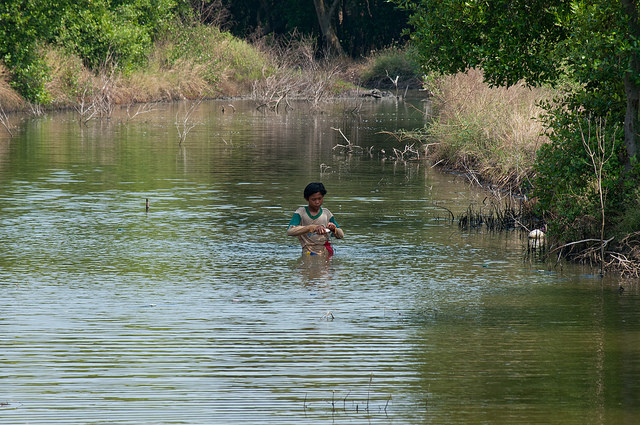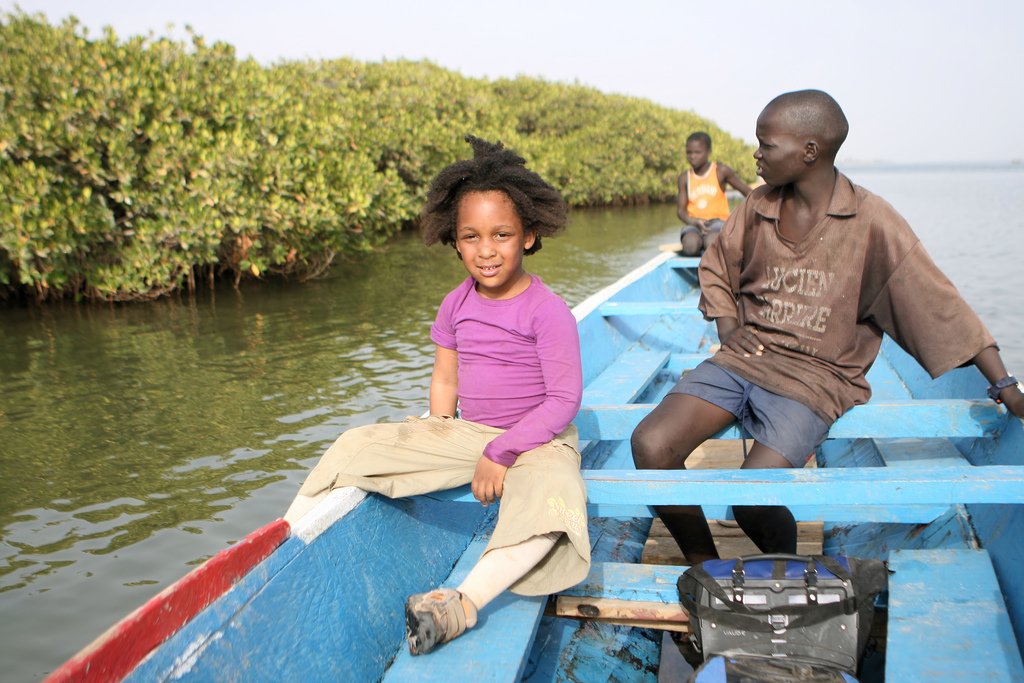Mangroves constitute only 0.5 percent of forest area worldwide, but millions of people depend on them for food, income and protection of coastlines against erosion. Since 1980, about one-fifth of the world’s mangroves have disappeared. Although human pressures are a major threat, little is known about the governance conditions that facilitate long-term conservation and restoration of these coastal forests — questions that will become all the more relevant as countries develop frameworks for action on climate change.
“Research to date has typically focused on the biophysical dimensions of mangroves, since a lack of knowledge in this area was considered a major obstacle to managing them,” explains Nining Liswanti, as Indonesia Coordinator of the Global Comparative Study on Forest Tenure Reform (GCS-Tenure), adding that mangrove governance remains relatively unexplored territory.
To fill this critical gap, scientists from the Center for International Forestry Research (CIFOR), coordinated by Principal Scientist Esther Mwangi, set out to explore tenure and governance arrangements of mangroves through a global review.
They have so far conducted case studies in the Rufiji delta of Tanzania, which has one of the two most extensive mangrove areas in East Africa, and in Lampung province in Indonesia, the country with the largest mangrove forest cover in the world, accounting for up to 22 percent of the world’s mangroves.
At these sites, scientists analyzed national-level legal and policy frameworks, coordination across government agencies, and institutional arrangements at the local level — looking at “how decisions are made and the ability to implement them, both in terms of resources and capacity,” says the Coordinator of the Tanzania study, Baruani Mshale.
INVOLVING COMMUNITIES
In Tanzania, the main dangers to mangroves are clearing for paddy rice farming and salt evaporation pans, unregulated harvesting for charcoal and timber, and growing competition between various foreign and local land-users.
“Mangrove forests in Indonesia continue to face enormous threats from economic activities like aquaculture and timber logging,” and half of them were destroyed between 1970 and 2001, the study notes.
Over the past 20 years, the Government of Indonesia has made interventions to curb mangrove deforestation, while in Tanzania, all mangrove forests are owned by the state and managed under strict protection, with restricted use by local communities. Yet threats to mangrove systems remain unabated. So what can be done?
“Expanding and strengthening the tenure rights of local communities to mangroves should be a central component of their sustainable management and conservation,” concludes the Tanzania case study. The key, the researchers find, is to strike a balance between forest use and conservation, and to involve communities in mangrove management by devolving rights to tenure.
Expanding and strengthening the tenure rights of local communities to mangroves should be a central component of their sustainable management and conservation
This participatory approach is backed by evidence in terrestrial forests around the world, Mshale says. “When rights are granted to locals, they can derive livelihood benefits from natural resources, so they become active conservation agents and forests can be sustainably managed.”
Devolving rights over mangrove tenure and management comes with further benefits: it incentivizes communities to take ownership of mangrove conservation, and it reduces the distrust between locals and state conservation agencies — institutions historically tasked with keeping locals from settling in forests and using their resources.
Community-based approaches are also cost-effective. “Strict protection approaches have generally failed for managing natural resources that people rely on for their livelihoods,” says Mshale. As populations grow and the pressure on resources increases, restricting access and use becomes more expensive and ineffective, he notes.
In Liswanti’s words, “it is impossible for authorities to enforce the rehabilitation of mangroves without the participation of communities.”
PRIORITIES FOR ACTION
Community-based management of mangrove forests is progressively gaining momentum. In Tanzania, the government has recently introduced regulated use in the Rufiji delta through various pilots, and Lampung province in Indonesia has seen community rehabilitation initiatives emerge in the past 10 to 20 years.
For sustainable management to flourish, however, a number of steps in policy, practice and research need to be taken. According to the analyses, a first priority is “better coordinating national and sub-national laws and policies,” as well as strengthening collaboration between the forestry, fisheries and agriculture sectors.
Tanzania has no specific policy tailored to the unique needs of mangrove systems, and in Indonesia, “no single national authority and policy on mangrove forest management operates in practice,” though mangrove-specific regulations at the local level fill up the void in some ways.
In Lampung, for instance, community leaders play a central role in mobilizing local action and liasing with external actors for mangrove protection, but “these links need to be regularized to sustain local effort over the longer term,” the study finds.
While emphasizing this need for mangrove-specific frameworks, the researchers found that at the local level, mangrove-specific regulations temper or substitute the array of national regulations.
Ensuring adequate financial and technical capacity for management by both the government and local communities is also key, as is expanding possibilities for income generation by locals, including access to markets for regulated mangrove products.
Women are particularly engaged in mangrove use, but they are often left out of decision-making and benefit-sharing. “Sociocultural and religious norms prevent women from participating in discussions that take place in public spaces,” says Mshale. Beyond legal and institutional provisions, alternative participatory processes should be considered to ensure that women’s voices are heard.
DRIVING CHANGE
Other priorities are supporting participatory management across all tenure arrangements, addressing political influence at the national and local levels, and embracing a landscape approach that takes into account all activities affecting mangroves, including farming, herding and the activities of foreign land-based investors.
Indonesian villages outside of state forest zones, for example, have been engaged in mangrove rehabilitation since 1995 to control erosion. However, they do not have regular access to government resources. “I admire their patience,” says Liswanti, “but it will be hard for communities to keep it up indefinitely without financial support.”
I admire their patience, but it will be hard for communities to keep it up indefinitely without financial support
In Tanzania, politicians encourage mangrove clearance for paddy rice farming to gain support during election times. “Politicians are key to changing people’s behavior, so we must find ways to work with them in favor of management strategies that achieve both environmental and livelihood outcomes,” stresses Mshale.
CIFOR’s case studies have been presented to stakeholders in both Tanzania and Indonesia, spurring dialogue between authorities, communities, non-governmental organizations, academics and donors. Additionally, scientists are looking into mangrove governance in Kenya (2017) and Vietnam (2018).
Further research into governance and tenure aspects is crucial, says Mshale, but the initial path has been blazed. “Each actor has its share of responsibility, so maintaining this dialogue is a vital first step to bringing about positive change.”
We want you to share Forests News content, which is licensed under Creative Commons Attribution-NonCommercial-ShareAlike 4.0 International (CC BY-NC-SA 4.0). This means you are free to redistribute our material for non-commercial purposes. All we ask is that you give Forests News appropriate credit and link to the original Forests News content, indicate if changes were made, and distribute your contributions under the same Creative Commons license. You must notify Forests News if you repost, reprint or reuse our materials by contacting forestsnews@cifor-icraf.org.

